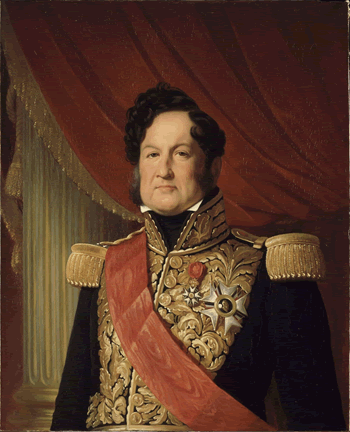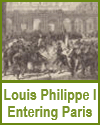 Louis Philippe I, also known as the "Citizen King," ruled France from 1830 to 1848. Born on October 6, 1773, in Paris, he was the son of Louis Philippe Joseph d'Orléans, Duke of Orléans, and Louise Marie Adélaïde de Bourbon. His early life was marked by the tumultuous events of the French Revolution, during which his father was executed. Louis Philippe himself lived in exile for many years, traveling across Europe and even spending time in the United States.
Louis Philippe I, also known as the "Citizen King," ruled France from 1830 to 1848. Born on October 6, 1773, in Paris, he was the son of Louis Philippe Joseph d'Orléans, Duke of Orléans, and Louise Marie Adélaïde de Bourbon. His early life was marked by the tumultuous events of the French Revolution, during which his father was executed. Louis Philippe himself lived in exile for many years, traveling across Europe and even spending time in the United States.
Louis Philippe's fortunes changed during the July Revolution of 1830, which saw the overthrow of the unpopular Bourbon king, Charles X. The revolution was driven by widespread dissatisfaction with Charles X's conservative policies and attempts to curtail civil liberties. In the wake of the uprising, Louis Philippe was invited by the French legislature to assume the throne, viewed as a more liberal and acceptable alternative. On August 9, 1830, he was proclaimed King of the French, rather than King of France, emphasizing his role as a constitutional monarch who derived his authority from the people.
Louis Philippe's reign, known as the July Monarchy, was characterized by its attempts to balance the interests of the conservative elite and the burgeoning liberal middle class. He promoted economic modernization, supporting infrastructure projects like railways and canals, which contributed to industrial growth. His government also encouraged cultural and scientific advancements, reflecting the values of the middle class.
However, his reign was not without challenges. Louis Philippe faced political instability, social unrest, and economic difficulties. Despite his liberal beginnings, he gradually became more conservative, attempting to maintain order and protect the interests of the wealthy. This shift alienated many of his initial supporters, including workers and the lower middle class, who became increasingly discontented with his rule.
The February Revolution of 1848 ultimately led to Louis Philippe's abdication and the establishment of the Second Republic. He fled to England, where he lived in exile until his death on August 26, 1850. Louis Philippe's reign remains a complex period in French history, marked by efforts to modernize the country and navigate the turbulent political landscape of post-revolutionary France. |
 Louis Philippe I, also known as the "Citizen King," ruled France from 1830 to 1848. Born on October 6, 1773, in Paris, he was the son of Louis Philippe Joseph d'Orléans, Duke of Orléans, and Louise Marie Adélaïde de Bourbon. His early life was marked by the tumultuous events of the French Revolution, during which his father was executed. Louis Philippe himself lived in exile for many years, traveling across Europe and even spending time in the United States.
Louis Philippe I, also known as the "Citizen King," ruled France from 1830 to 1848. Born on October 6, 1773, in Paris, he was the son of Louis Philippe Joseph d'Orléans, Duke of Orléans, and Louise Marie Adélaïde de Bourbon. His early life was marked by the tumultuous events of the French Revolution, during which his father was executed. Louis Philippe himself lived in exile for many years, traveling across Europe and even spending time in the United States. 






